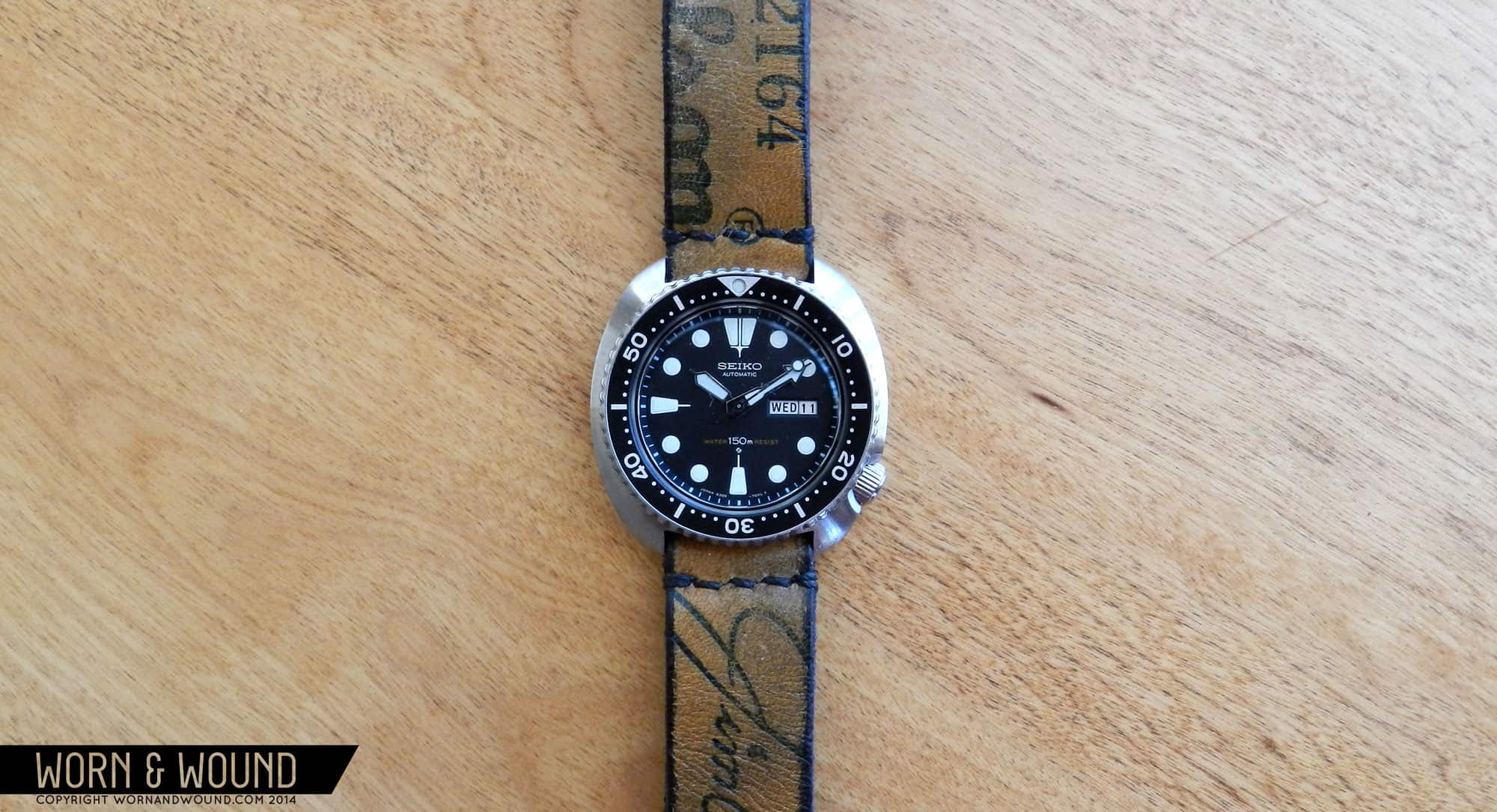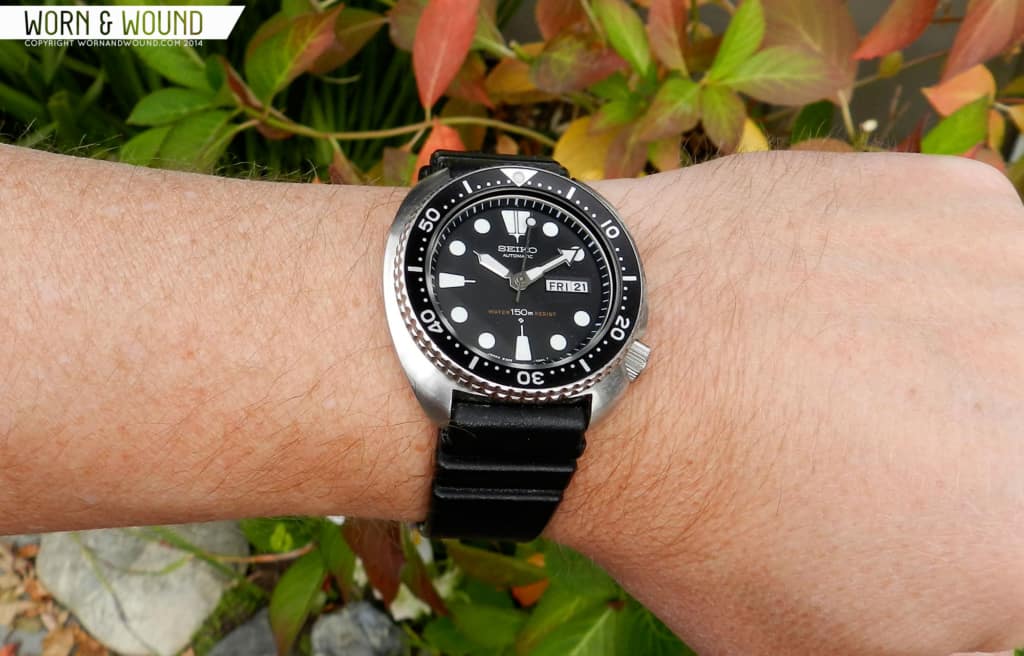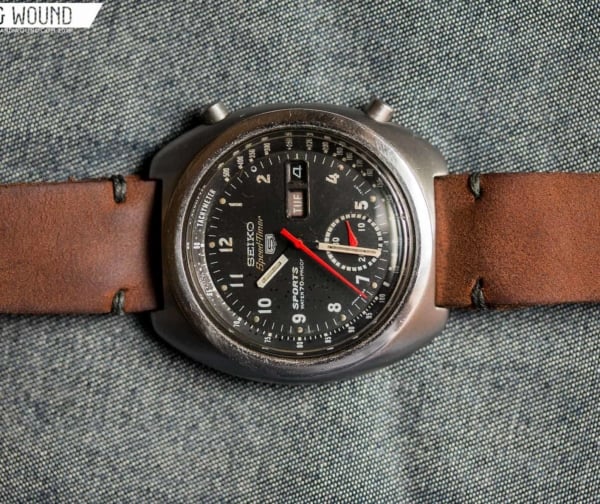There are many vintage Seiko diver models that are popular with collectors, but none more so than the venerable 6309-7040/9. Generally regarded as the their third generation professional/recreational diver, the 6309-704X replaced the 6105 series in 1976 and continued to be produced until 1988. As with many of the vintage Seiko models, the last digit of the reference number denotes the original market that the watch was intended for. The 7049 was designated for the North American market, and the 7040 was for the Japanese Domestic market and the rest of the world. While there are some later models that started with 6309, for brevity’s sake I’ll just use ‘6309’ in this article to refer to the 6309-7040 / 6309-7049. It should be noted that from 1976 to 1981 Seiko produced the 6306-7000, a cousin to the 6309. It’s nearly identical to the 6309, except it has a 6306 hacking movement and it has a Kanji day wheel. The 6306 was made exclusively for the Japanese domestic market.
The Seiko 6309 comes housed in a large cushion shaped stainless steel case that measures 45mm wide by 48mm long and 13mm thick, with nice 22mm lugs. Even though this is a large watch, the design wears extremely comfortably, and is and continues to be a favorite among Seiko collectors. The original factory case finish features circular brushing on the top, with polished sides and straight brushing on the bottom. There is a nice, elegant sharp line delineating the top brushed portion from the polished sides. The oversized crown is located at 4 o’clock and is recessed into the case for protection. One of the best features of the 6309 is the crown, which screws down securely for superior water resistance. This is in contrast to the prior 6105 models that did not screw down. The crown is attached via a two-piece spring-loaded stem that makes the crown pop out a bit after unscrewing it. It should be noted that the crown tube is not replaceable, so if it is stripped, it’s nearly impossible to be fixed.
The bi-directional 60-click bezel features a matte finish black aluminum insert that angles slightly downward towards the crystal from the outside edge. The outside of the bezel has two rows of deep knurled grooves for a superior grip. The crystal is made of Seiko’s proprietary Hardlex mineral glass, and is flat with a frosted edge. It rests on an “L” shaped gasket and is held securely in place by a metal retaining ring that is hidden under the bezel.









 Featured Videos
Featured Videos













